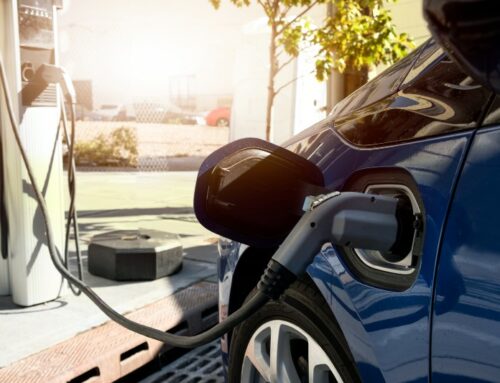OCTOBER’S new car market grew by 14.3% to reach 153,529 registrations, 7.2% above pre-pandemic levels and marking the best performance for the month since 2018, according to the latest figures from the Society of Motor Manufacturers and Traders (SMMT).
The 15th month of consecutive growth was driven almost entirely by large fleet registrations, which grew 28.8% to reach 87,479 units. Private demand was stable at 62,915 vehicles, a 0.3% increase, while the much smaller business sector saw registrations fall -15.2% to 3,135 units. With the sustained increase in new car registrations, overall vehicle uptake is now up 19.6% in the first 10 months, with the market currently enjoying its best year since 2019.
Electrified vehicle uptake continued to accelerate in October accounting for 37.6% of all new car registrations. Hybrid electric vehicles (HEVs) grew 24.6% to reach 19,574 units, while plug-in hybrid vehicles (PHEVs) recorded the highest proportional growth, up 60.5% to 14,285 registrations.
Battery electric vehicle (BEV) uptake increased for the 42nd month in a row, by 20.1% to 23,943 units. Given overall market growth, however, this amounted to a BEV market share of 15.6%, a relatively small rise from last year’s 14.8%.
Furthermore, private registrations accounted for fewer than one in four new BEVs this year, underscoring the need for fiscal incentives for private consumers. Year to date, BEV volumes have risen 34.2% to account for 16.3% of new registrations this year, up slightly from 14.6% this time last year.
October’s plug-in vehicle performance follows a significant increase in chargepoint rollout in Q3, which improved significantly relative to new plug-in car uptake. 4,753 new standard chargepoints came online in the quarter, the largest ever quarterly delivery.
This equates to one new standard public chargepoint being installed for every 26 new plug-in cars reaching the road between July and September, improved from 38 in the same quarter last year. However, installation was disproportionately focused on London and the South East, which received four out of five new chargepoints commissioned during the quarter – despite the region accounting for fewer than two in five new plug-in registrations during the same period. In comparison, just 13 chargers were installed in Yorkshire and Humberside, while the North actually had 105 chargers taken out of service.
With EV uptake greatly influenced by perceptions of chargepoint infrastructure availability and accessibility, action should be taken to ensure more equitable distribution and pricing for public charging. Reducing VAT on public charging to match home use would mean those unable to install their own chargepoint – typically those in flats, terraces and rented accommodation – would avoid paying four times the tax paid by those who can – typically those who own houses with off-street parking.
Binding targets for chargepoint rollout, in line with those set for the car market by the Zero Emission Vehicle Mandate and supported by the necessary changes to planning and grid connections so desperately needed, would also help accelerate installation, giving consumers confidence in being able to charge when and where needed.
Mike Hawes, SMMT Chief Executive, said: “With demand for new cars surpassing pre-pandemic levels in the month, the market is defying expectations and driving growth. As fleet uptake flourishes, particularly for EVs, sustained success depends on encouraging all consumers to invest in the latest zero emission vehicles. The Autumn Statement is a key opportunity for government to introduce incentives and facilitate infrastructure investment. Doing so would send a clear signal of support for drivers, reassuring them that now is the time to switch to electric.”
The latest market outlook has been revised upwards to reflect market growth higher than expected. Overall new car registrations are anticipated to reach 1.886 million by the end of the year, a rise of 2.1% on July’s expectations. However, expectations for BEV uptake have been downgraded again slightly, by -1.7% to 324,000 units resulting in an expected market share at year end of 17.2%.
Caroline Litchfield, Partner and Head of Manufacturing and supply chain at independent law firm Brabners said the automotive sector is at an important juncture. “Electric vehicle (EV) registrations for the year have almost already surpassed the number registered in the whole of 2022. However, this surge in demand has largely been driven by fleet sales rather than private buyers, with a recent NFDA survey indicating that price remains the biggest barrier for consumers.
“Consequently, consumers and businesses alike will be keeping a close eye on the King’s Speech and Autumn Statement in the coming weeks for policies that encourage EV adoption amongst everyday motorists. Independent dealerships in particular will be banking on further incentivisation for drivers to make the switch. As well as navigating inflationary pressures and managing the growing threat posed by the online dealership model, an increasing number are investing heavily in the infrastructure to support EV sales.”
Mark Oakley, Director of AA Cars said the latest figures show that September’s jump in sales – which came as drivers snapped up vehicles with the coveted, brand new 73 plates – was no flash in the pan.
“October data confirms that new car sales have risen for an incredible 15 months in a row, and demonstrates the resilience and adaptability of the automotive industry. The supply issues which previously plagued dealerships continue to ease as a wave of fresh models hits forecourts. The UK’s car production revved up by an impressive 39.8% in September compared to the same month last year, hitting its highest level of 2023 so far.
“With the availability of electric models increasing each month, drivers who want to go green are spoilt for choice – and EV sales are following suit.
“While EVs are more expensive than comparable petrol or diesel models, each month also sees thousands of second-hand and nearly-new EVs and hybrids make their way into the used market – which offers a more affordable option for potential buyers.
“Time will tell if the Government’s decision to delay the ban on the sale of new petrol and diesel cars to 2035 will put a speed bump on the road to wider EV adoption. Overall though, today’s numbers are a triumph for the motor industry, and signal dealers’ success at helping buyers make big ticket purchases even against the challenging economic backdrop.”







Leave A Comment